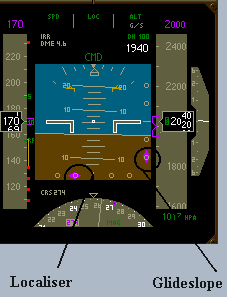
Once you have reached the localizer centerline, maintain the inbound heading until the CDI moves off center.

The IFR pilot’s weakest link is approach and departure knowledge as it relates to instrument charts. This is commonly described as “flying away from the needle.” (See Figure 9-38, aircraft A and B.) Back course signals should not be used for an approach unless a back course approach procedure is published for that particular runway and the approach is authorized by ATC.įlight Literacy Recommends Rod Machado's Secrets of Instrument Approaches and Departures – If you’re an active IFR pilot or preparing for an IPC or even your ATP or IFR rating, then this interactive course is for you. Unless the aircraft has reverse sensing capability and it is in use, when flying inbound on the back course or outbound on the front course, heading corrections to on-course are made opposite the needle deflection. To follow indications displayed in the aircraft, start from A and proceed through E. (See Figure 9-38, aircraft C, D, and E.)įigure 9-38. When inbound on the front course, or outbound on the back course, the course indication remains directional.

Rotating the OBS has no effect on the operation of the localizer needle, although it is useful to rotate the OBS to put the LOC inbound course under the course index. The localizer needle indicates, by deflection, whether the aircraft is right or left of the localizer centerline, regardless of the position or heading of the aircraft.


 0 kommentar(er)
0 kommentar(er)
